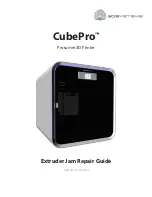
Laser Safety
Common Laser Hazards
Light Hazards
OSHA information concerning laser hazards can be assessed through the following link:
http://www.osha-slc.gov/dts/osta/otm/otm_iii_6.html
Other than the light that is emitted, lasers generate the same hazards as many other types of
equipment. Common hazards are high voltage, compressed gases and intense radio frequency
energy. The presence of these hazards depends upon the specific laser technology employed. For
example, pulsed CO2 lasers can generate internal voltages in excess of 25,000 volts and often
contain large capacitors capable of delivering over 200 Joules of energy. These lasers have
interlocked enclosures, which should not be defeated. When opening the enclosures of these lasers,
capacitive discharge procedures should be understood and strictly followed.
Pulsed lasers also typically use a flowing gas design, requiring connection to a cylinder of
compressed gas. While most laser gases are very safe, pressurized cylinders can be hazardous and
must be properly restrained during use and transportation.
Radio frequency energy can cause severe burns. Only trained personnel should service laser
equipment employing RF generators (like sealed CO2 lasers). Connections carrying RF energy
should never be touched during operation.
Often materials being marked give off fumes and gases. Sometimes these gases are noxious or even
toxic. Fumes from laser marking should be controlled with an adequate fume extraction system.
When in doubt, a chemical analysis of the fumes is suggested to determine if any fume hazards exist.
Laser systems are typically designed to prevent a beam from directly contacting a person. Risks,
therefore, are more a result of unintentional reflected light. Reflected light falls into two categories,
diffuse and specular. Diffuse reflections result when reflective surface irregularities scatter light in all
directions. Diffuse reflections are typically much safer as the energy is split into many directions.
Specular reflections are mirror-like reflections and can reflect close to 100% of the incident light.
Because such a large percentage of the energy can be redirected, specular reflections are more
hazardous. Note that as the diameter of the laser beam increases, the ability to cause damage
decreases. Laser intensity is measured in power or energy over a measured area (W/cm2). While
focused laser beams produce a very small spot size (and very intense energy) at the mark point, they
are typically safer than unfocused beams because the laser beam size spreads out much more
rapidly as the distance from the mark point increases.
While specular reflections are more hazardous, they are much less common. Most laser marking
systems can be designed to eliminate specular reflective surfaces in the beam path.
L A S E R S F O R M A R K I N G
Zetalase
™
6
General Manual SE 1







































